Archive for December, 2010
-
Bed Bath & Beyond Crushes Earnings
Eddy Elfenbein, December 22nd, 2010 at 6:32 pmBed Bath & Beyond (BBBY) just reported earnings of 74 cents per share, nine cents more than Wall Street was expecting.
The company also raised its full-year forecast (fiscal year ending February 2011) to as much as $2.90 per share from the previous high-end forecast of $2.76 per share. The stock is up nearly 6% after-hours.
The chain’s increased forecast comes as retail sales improve across the U.S. On Dec. 14, the National Retail Federation boosted its holiday retail sales forecast by 1 percentage point, to an increase of 3.3 percent.
Bed Bath & Beyond will repurchase shares worth $2 billion, according to the statement.
The retailer rose $2.83, or 5.9 percent, to $50.50 at 4:48 p.m. in after-hours trading on the Nasdaq Stock Market. Shares have climbed 23 percent this year.
Bed Bath & Beyond, which operates more than 1,000 stores in North America and sells home products, giftware and health and beauty care items, said sales at stores open more than a year rose 7 percent in the third quarter.
It also reported third-quarter earnings of 74 cents a share, a 28 percent increase from a year ago. Analysts had projected earnings of 65 cents, according to an average of estimates compiled by Bloomberg.
Quarter Sales Gross Profit Operating Profit Net Profit EPS May-99 $356,633 $146,214 $28,015 $17,883 $0.06 Aug-99 $451,715 $185,570 $53,580 $33,247 $0.12 Nov-00 $480,145 $196,784 $50,607 $31,707 $0.11 Feb-00 $569,012 $238,233 $77,138 $48,392 $0.17 May-00 $459,163 $187,293 $36,339 $23,364 $0.08 Aug-00 $589,381 $241,284 $70,009 $43,578 $0.15 Nov-01 $602,004 $246,080 $64,592 $40,665 $0.14 Feb-01 $746,107 $311,802 $101,898 $64,315 $0.22 May-01 $575,833 $234,959 $45,602 $30,007 $0.10 Aug-01 $713,636 $291,342 $84,672 $53,954 $0.18 Nov-02 $759,438 $311,030 $83,749 $52,964 $0.18 Feb-02 $879,055 $370,235 $132,077 $82,674 $0.28 May-02 $776,798 $318,362 $72,701 $46,299 $0.15 Aug-02 $903,044 $370,335 $119,687 $75,459 $0.25 Nov-03 $936,030 $386,224 $119,228 $75,112 $0.25 Feb-03 $1,049,292 $443,626 $168,441 $105,309 $0.35 May-03 $893,868 $367,180 $90,450 $57,508 $0.19 Aug-03 $1,111,445 $459,145 $155,867 $97,208 $0.32 Nov-04 $1,174,740 $486,987 $161,459 $100,506 $0.33 Feb-04 $1,297,928 $563,352 $231,567 $144,248 $0.47 May-04 $1,100,917 $456,774 $128,707 $82,049 $0.27 Aug-04 $1,273,960 $530,829 $189,108 $120,008 $0.39 Nov-05 $1,305,155 $548,152 $190,978 $121,927 $0.40 Feb-05 $1,467,646 $650,546 $283,621 $180,980 $0.59 May-05 $1,244,421 $520,781 $150,884 $98,903 $0.33 Aug-05 $1,431,182 $601,784 $217,877 $141,402 $0.47 Nov-06 $1,448,680 $615,363 $205,493 $134,620 $0.45 Feb-06 $1,685,279 $747,820 $304,917 $197,922 $0.67 May-06 $1,395,963 $590,098 $148,750 $100,431 $0.35 Aug-06 $1,607,239 $678,249 $219,622 $145,535 $0.51 Nov-07 $1,619,240 $704,073 $211,134 $142,436 $0.50 Feb-07 $1,994,987 $862,982 $309,895 $205,842 $0.72 May-07 $1,553,293 $646,109 $154,391 $104,647 $0.38 Aug-07 $1,767,716 $732,158 $211,037 $147,008 $0.55 Nov-08 $1,794,747 $747,866 $203,152 $138,232 $0.52 Feb-08 $1,933,186 $799,098 $259,442 $172,921 $0.66 May-08 $1,648,491 $656,000 $118,819 $76,777 $0.30 Aug-08 $1,853,892 $739,321 $187,421 $119,268 $0.46 Nov-08 $1,782,683 $692,857 $136,374 $87,700 $0.34 Feb-09 $1,923,274 $785,058 $231,282 $141,378 $0.55 May-09 $1,694,340 $666,818 $142,304 $87,172 $0.34 Aug-09 $1,914,909 $773,393 $222,031 $135,531 $0.52 Nov-09 $1,975,465 $812,412 $245,611 $151,288 $0.58 Feb-10 $2,244,079 $955,496 $370,741 $226,042 $0.86 May-10 $1,923,051 $775,036 $225,394 $137,553 $0.52 Aug-10 $2,136,730 $874,918 $296,902 $181,755 $0.70 Nov-10 $2,193,755 $896,508 $305,110 $188,574 $0.74 -
Home Depot Vs. Lowe’s
Eddy Elfenbein, December 22nd, 2010 at 4:28 pmI was curious to see what the long-term trend looks like between Home Depot (HD) and Lowe’s (LOW). Below is HD’s stock price divided by LOW’s stock price (adjusted for many, many splits).
Let me preface this by saying that this is hardly sophisticated analysis. I’m basically just playing with data. However, I do think it’s interesting to see how the long-term relationship has played out.
While HD crushed LOW through through the early 1990s, LOW came back in a big way. LOW had a nice run from 1992 to 1994 and again from 2000 to 2003.
Over the last eight years, both stocks have been roughly parallel. HD has slightly outperformed LOW since October 2008 which may indicate that LOW has been hurt more by the recession. Perhaps HD does better with budget-conscious consumers.
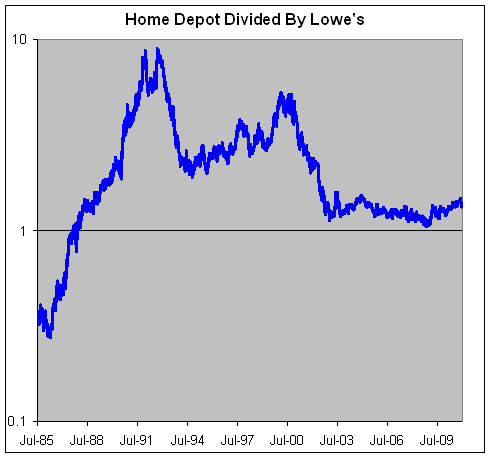
-
Q3 GDP Revised to 2.6%
Eddy Elfenbein, December 22nd, 2010 at 12:53 pmThe government revised its estimate for the third-quarter to 2.6%. The initial report was 2%. Then last month, it was revised to up to 2.5%. The only hitch with today’s revision is that Wall Street was expecting a revision to 2.8%.
Growing incomes, the continuation of Bush-era tax cuts and an improving labor market may encourage Americans to boost their spending, which accounts for about 70 percent of the world’s largest economy. Today’s figures showed a measure of inflation rose at the slowest pace in more than 50 years, underscoring the Federal Reserve’s strategy of extending record monetary stimulus.
Today’s data set the stage for “a stable pace of growth” in 2011, said Guy LeBas, chief fixed-income strategist at Janney Montgomery Scott LLC in Philadelphia. The lack of “inflation does remain the biggest downside risk to the U.S. economy” and GDP expansion at this rate “is not enough to move unemployment meaningfully,” he said.
(…)
Inventory Growth
A bigger gain in inventories added more to growth than the Commerce Department estimated last month.
The need to restock inventories, a major driver of the economic recovery, may diminish in coming months as companies try to keep stockpiles more in line with demand. The value of unsold goods rose $121.4 billion in the third quarter, up from a previously reported $111.5 billion.
The trade gap was revised to $505 billion from $506.7 billion, today’s report showed. The deficit subtracted 1.7 percentage points from growth.
Excluding trade and inventories, a measure of underlying demand, the economy would have grown at a 2.6 percent annual rate after expanding 4.3 percent in the second quarter. The Commerce Department last month estimated a 2.9 percent pace of so-called final sales to domestic purchasers in the third quarter.
Corporate Investment
Corporate spending on new equipment as well as export demand will support production. Business purchases of equipment and software rose at a 15.4 percent pace last quarter, revised from 16.8 percent and following a 24.8 percent jump for the second quarter that was the biggest in 27 years. Spending on structures including office buildings and factories fell 3.5 percent.
“We have seen now an extended period of time of recovery in the components business,” Paul Reilly, chief financial officer of Arrow Electronics Inc., said earlier this month at a conference in New York. Melville, New York-based Arrow is a distributor of electronic components and computer products to industrial customers.
Corporate profits increased 1.6 percent, revised from the 2.8 percent gain estimated last month, today’s report showed. They were up 26 percent from the same period a year earlier.
-
Morning News: December 22, 2010
Eddy Elfenbein, December 22nd, 2010 at 8:17 amBank Borrowing from ECB still Heavy into 2011
Euro Helped by Report China Will Buy Portugal’s Debt
U.S. Stock-Index Futures Fluctuate; Nike, Xilinx Retreat as Tibco Climbs
Banks Best Basel as Regulators Dilute or Delay Capital Rules
Will The January Effect and The Presidential Cycle Combine for a Big January in Stocks?
Do We Need Google To Measure Inflation?
Copper Steadies Within Reach of Record High
U.S. Stocks Erasing Loss Since Lehman Failure Fuels 2011 Bulls
-
13 Out of 15
Eddy Elfenbein, December 21st, 2010 at 11:37 pmThe S&P 500 has now risen for 13 of the last 15 sessions. Granted, most of these increases have been tiny, but the market has still gone up.
Today, in fact, the S&P 500 closed at 1,254.60 which is the highest close since September 8, 2008. In other words, it’s the highest close since Lehman Brothers went kablam-o.
-
U.S. Population = 308,745,538
Eddy Elfenbein, December 21st, 2010 at 11:49 amIt’s official. The Census Bureau has reported that the U.S. population stands (or stood on April 1) at 308,745,538.
Since I know you’re curious, the prime factors are 2 X 37 X 47 X 88771 = 308,745,538.
We can also use this occasion revisit my idea for the 28th Amendment (otherwise known as the Elfenbein Amendment) which would target the size of the House of Representatives to the pi root of the population.
Based on the new count, this would mean the House would now hold 504 members.
-
Q3 Earnings Were Pretty Darn Good
Eddy Elfenbein, December 21st, 2010 at 11:26 amAll summer we were being told that the economy was about to head into a Double Dip. Now the numbers are in for the third-quarter earnings season, and the earnings were quite good.
The median EPS surprise was 5%.
For the S&P 500, there were 359 positive surprises and just 95 disappointments.
There was positive year-over-year growth for 379 stocks, and it fell for 117 stocks.
56.6% of all firms did better than expected on their top line. Revenue growth was healthy at 8.12%.
Net margins were 9.01%, the same as Q2 but way above the 7.78% from one year ago.
Excluding financials, net margins rose to 8.05% from 7.90% for Q2 and from 6.99% a year ago.
Full-year total earnings for the S&P 500 are expected to jump 43.1% in 2010 and 11.4% further in 2011.
Revenues for the S&P 500 are expected to rise 4.93% in 2010 and 5.78% in 2011.
The revisions ratio for the full S&P 500 is at 1.75 for 2010 and at 1.48 for 2011, both bullish readings.
-
Morning News: December 21, 2010
Eddy Elfenbein, December 21st, 2010 at 8:34 amStocks Start Week With Mixed Finish
Stocks, Euro, Commodities Gain as Korea Tensions Ease
Portuguese, Irish Bonds Fall; Moody’s Move Adds to Debt Concern
China Eases Rules on Government Contract Bidding, EU Says
Crude Up on Cold Weather as January Nears Expiration
Prospect of WikiLeaks Dump Poses Problems for Regulators
TD Bank to Buy Chrysler Financial for $6.3 Billion
News Corp. Bid for BSkyB Gets Nod From E.U.
-
The Santa Claus Rally
Eddy Elfenbein, December 20th, 2010 at 2:53 pmWe’re about to enter the strongest time of the year for the stock market.
The following chart is based on the Dow’s historic daily changes from 1896 to 2007. The Dow has an average gain for every day from December 22 to January 7 (except for the two holidays of Christmas and New Year’s Day). Over this 17-day period, the Dow has an average gain of 3.39%. That’s more than 40% of the Dow’s annual gain.
(I should add that when looking at this chart, bear in mind how narrow the range is for the Y-Axis.)
-
When Will the Fed Raise Rates?
Eddy Elfenbein, December 20th, 2010 at 2:29 pmPaul Krugman posts this chart from the Cleveland Fed looking at the futures market’s take on when the Fed will increase interest rates.
The market seems to expect a rate increase by this summer. Krugman, naturally, doesn’t see a need for the Fed to raise rates through 2012. I think it’s very likely that the Fed will raise rates before many people expect they will. Once a rate increase comes, my view of the market will change. Until that happens, stocks are a very good place to be.
-
-
Archives
- May 2025
- April 2025
- March 2025
- February 2025
- January 2025
- December 2024
- November 2024
- October 2024
- September 2024
- August 2024
- July 2024
- June 2024
- May 2024
- April 2024
- March 2024
- February 2024
- January 2024
- December 2023
- November 2023
- October 2023
- September 2023
- August 2023
- July 2023
- June 2023
- May 2023
- April 2023
- March 2023
- February 2023
- January 2023
- December 2022
- November 2022
- October 2022
- September 2022
- August 2022
- July 2022
- June 2022
- May 2022
- April 2022
- March 2022
- February 2022
- January 2022
- December 2021
- November 2021
- October 2021
- September 2021
- August 2021
- July 2021
- June 2021
- May 2021
- April 2021
- March 2021
- February 2021
- January 2021
- December 2020
- November 2020
- October 2020
- September 2020
- August 2020
- July 2020
- June 2020
- May 2020
- April 2020
- March 2020
- February 2020
- January 2020
- December 2019
- November 2019
- October 2019
- September 2019
- August 2019
- July 2019
- June 2019
- May 2019
- April 2019
- March 2019
- February 2019
- January 2019
- December 2018
- November 2018
- October 2018
- September 2018
- August 2018
- July 2018
- June 2018
- May 2018
- April 2018
- March 2018
- February 2018
- January 2018
- December 2017
- November 2017
- October 2017
- September 2017
- August 2017
- July 2017
- June 2017
- May 2017
- April 2017
- March 2017
- February 2017
- January 2017
- December 2016
- November 2016
- October 2016
- September 2016
- August 2016
- July 2016
- June 2016
- May 2016
- April 2016
- March 2016
- February 2016
- January 2016
- December 2015
- November 2015
- October 2015
- September 2015
- August 2015
- July 2015
- June 2015
- May 2015
- April 2015
- March 2015
- February 2015
- January 2015
- December 2014
- November 2014
- October 2014
- September 2014
- August 2014
- July 2014
- June 2014
- May 2014
- April 2014
- March 2014
- February 2014
- January 2014
- December 2013
- November 2013
- October 2013
- September 2013
- August 2013
- July 2013
- June 2013
- May 2013
- April 2013
- March 2013
- February 2013
- January 2013
- December 2012
- November 2012
- October 2012
- September 2012
- August 2012
- July 2012
- June 2012
- May 2012
- April 2012
- March 2012
- February 2012
- January 2012
- December 2011
- November 2011
- October 2011
- September 2011
- August 2011
- July 2011
- June 2011
- May 2011
- April 2011
- March 2011
- February 2011
- January 2011
- December 2010
- November 2010
- October 2010
- September 2010
- August 2010
- July 2010
- June 2010
- May 2010
- April 2010
- March 2010
- February 2010
- January 2010
- December 2009
- November 2009
- October 2009
- September 2009
- August 2009
- July 2009
- June 2009
- May 2009
- April 2009
- March 2009
- February 2009
- January 2009
- December 2008
- November 2008
- October 2008
- September 2008
- August 2008
- July 2008
- June 2008
- May 2008
- April 2008
- March 2008
- February 2008
- January 2008
- December 2007
- November 2007
- October 2007
- September 2007
- August 2007
- July 2007
- June 2007
- May 2007
- April 2007
- March 2007
- February 2007
- January 2007
- December 2006
- November 2006
- October 2006
- September 2006
- August 2006
- July 2006
- June 2006
- May 2006
- April 2006
- March 2006
- February 2006
- January 2006
- December 2005
- November 2005
- October 2005
- September 2005
- August 2005
- July 2005
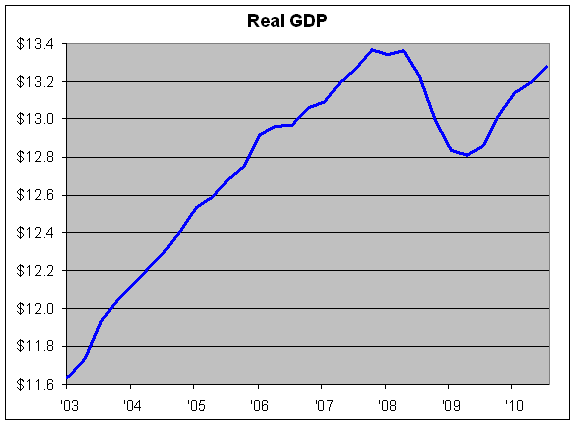
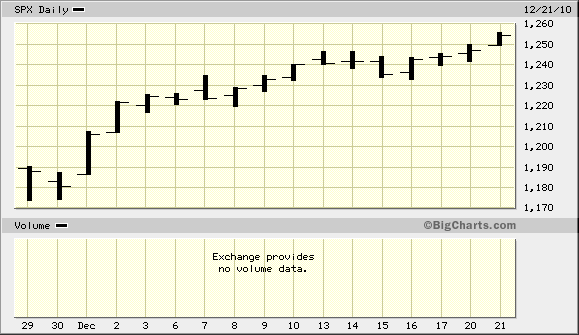
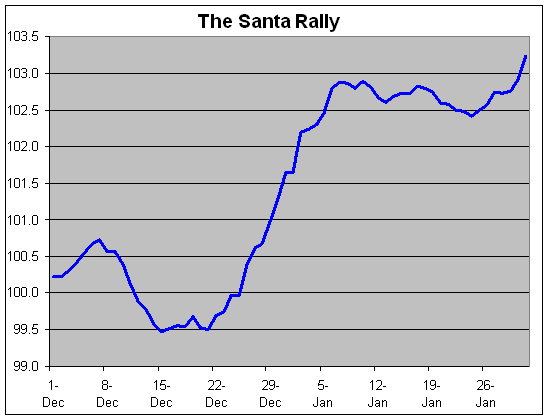
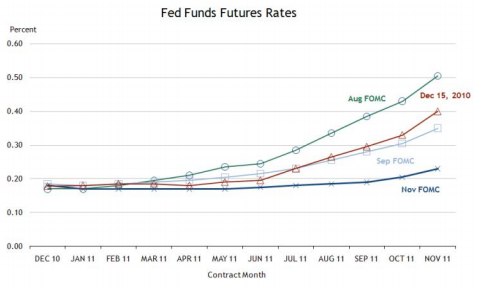
 Eddy Elfenbein is a Washington, DC-based speaker, portfolio manager and editor of the blog Crossing Wall Street. His
Eddy Elfenbein is a Washington, DC-based speaker, portfolio manager and editor of the blog Crossing Wall Street. His